Hand therapy
What are your extensor tendons and why have these been repaired?
The large muscles on the back of your forearm are attached to tendons that cross the wrist and attach on to the bones of your fingers. These are responsible for straightening your fingers. They are important in allowing you to open your hand during activity and are essential in allowing you to function normally.
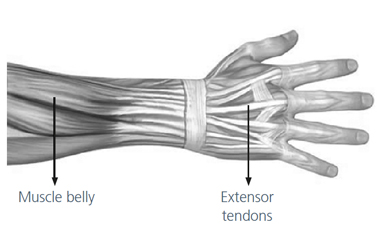
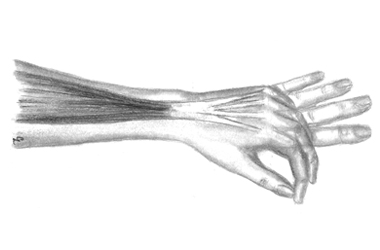
Your tendon/s has been repaired to restore this normal function and you will need to undergo a strict hand therapy programme following this surgery to optimise your recovery and functional use of your hand.
What might I expect following surgery?
Your tendon has been repaired with complex microsurgery and will need strict care to limit the possibility of re-injury of your repaired tendon (rupture).
You will normally be seen by our hand therapy team within one week of your surgery and then on a regular basis following this. You will not be able to use your hand for any activity, for example; gripping or lifting until at least eight weeks following your surgery.
Why is it important to look after my wound and scar?
Following surgery it is important that you keep your dressing dry to avoid problems with your wound. Normally your stitches will be removed 10 to14 days following your surgery.
Once your wound is fully healed you will be shown how to use vasoline or an oil (such as sweet almond oil) to massage your scar to help prevent any excess scar tissue from causing problems and limiting the movement in your hand long term.
You will also be given advice regarding how to manage swelling in your finger. This may include elevating your hand above your heart level or through the use compression.
Why is it important to protect my repaired tendon/s?
The repair will be weak and will require protection in a thermoplastic splint to prevent movements and activity that will risk rupturing your tendon. This lightweight splint will be moulded to your hand by a hand therapist and is to be worn 24 hours per day for the first 4 weeks.
Following this, for a further two weeks, you will be allowed to remove your splint indoors, however, you will need to continue wearing your splint whilst sleeping and if in crowded places while your tendon continues to heal.
At four weeks you may be given a new splint to allow more movement whilst still protecting your damaged tendon.
Important
While wearing your splint you will need to check your skin on a regular basis for red or sore areas and inform your therapist if you have any concerns.
Do not place your splint in hot water or near a heater, as this will affect its shape and fitting, resulting in the splint becoming uncomfortable to wear.
Your arm and splint will need to be covered with a plastic bag when showering or bathing (please do not remove your splint).
What important advice should I follow?
- Do not use your hand for anything other than your exercises (see the next page for exercises) until advised by your hand therapist
- Do not remove your splint unless advised by your hand therapist
- It is important that you keep your unaffected joints moving normally including your shoulder and elbow.
- You will not be able to resume driving until at least eight weeks following your surgery
- If you notice any sudden pain, swelling, redness or a change in your fingers ability to move or your splint becomes too loose or tight please contact your hand therapist
Who should I contact if I have any problems?
If you have any problems or questions regarding your hand therapy please contact the hand therapy team on:
Why is it important to exercise?
Exercise is important to allow your tendon to heal. It will also reduce stiffness and swelling in your hand and fingers.
Your hand therapist will teach you specific exercises which you must complete throughout the day – normally every four hours. Too much or too little exercise is dangerous with risk of rupture or adhesions to your repaired tendon/s if not followed precisely.
Your hand therapist will advise you of when to move onto new exercises.
Weeks one to four
Passive MCPJ extension
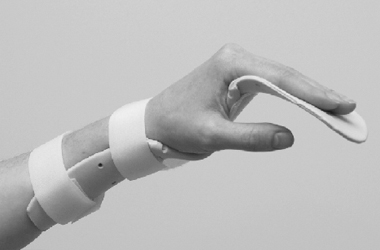
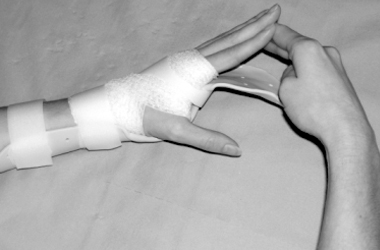
Use your other hand to lift your fingers off the splint until they are straight. Then allow them to return to the splint on their own. Repeat 4 times every 4 hours
Active MCPJ extension

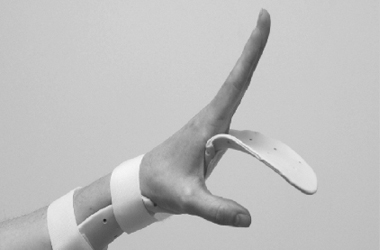
Lift the fingers of your injured hand off the splint until straight. Then allow them to return to the splint on their own. Repeat 4 times every 4 hours
Hook

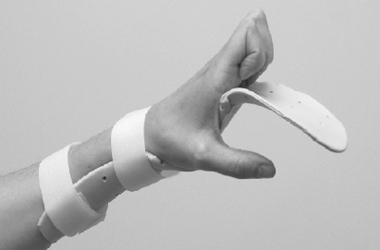
Lift the fingers of your injured hand off the splint until completely straight. Then curl your end joints to make a hook shape whilst keeping the back knuckles straight. Then allow your fingers to return to the splint. Repeat 4 times every 4 hours
Week four onwards
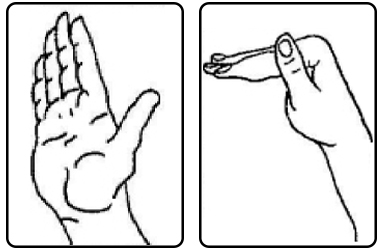
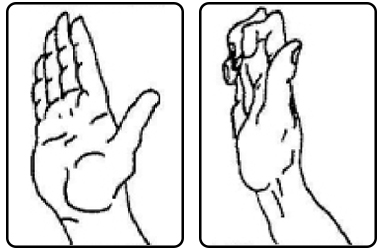
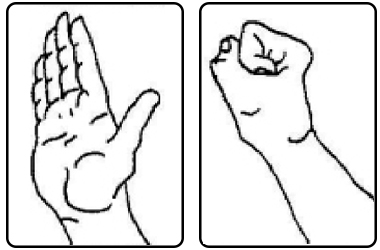
Patient experience
South Tees Hospitals NHS Foundation Trust would like your feedback. If you wish to share your experience about your care and treatment or on behalf of a patient, please contact The Patient Experience Department who will advise you on how best to do this.
This service is based at The James Cook University Hospital but also covers the Friarage Hospital in Northallerton, our community hospitals and community health services.
To ensure we meet your communication needs please inform the Patient Experience Department of any special requirements, for example; braille or large print.
T: 01642 835964
E: [email protected]